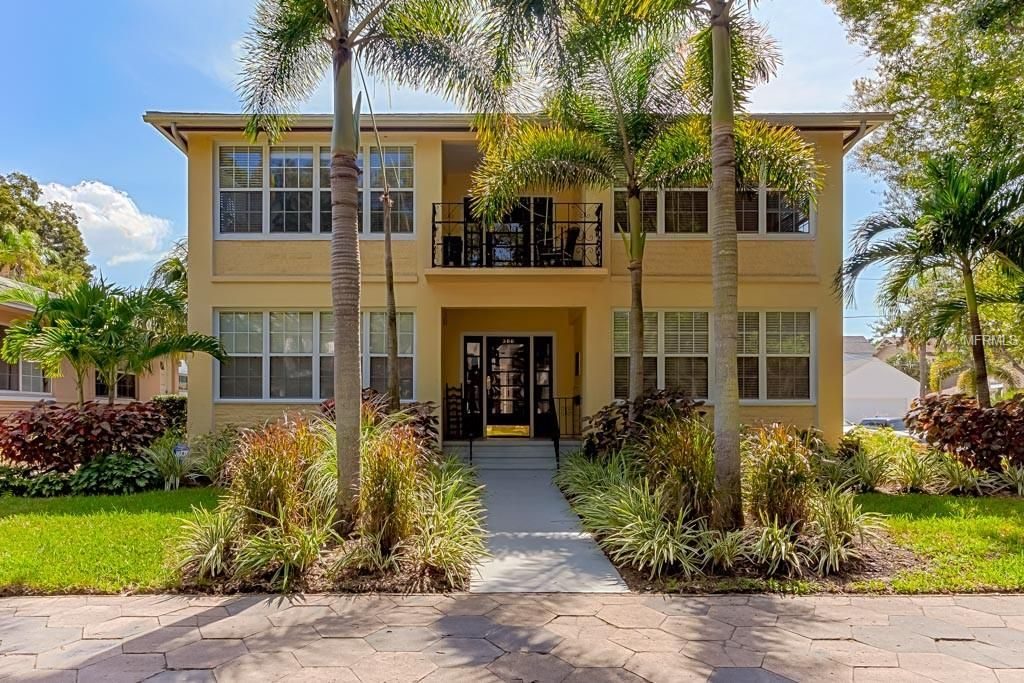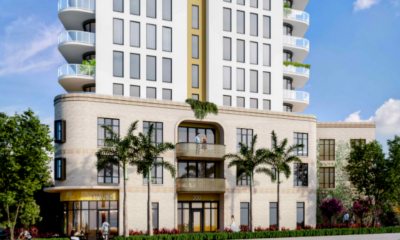Thrive
Tackling the housing crisis: Should St. Pete undo 50-year-old regulations?

Last week, Minneapolis became a beacon of innovation for successful cities across the country to follow. With the passage of Minneapolis 2040, the city’s comprehensive plan, news spread like wildfire that it had become the first major U.S. city to commit to ending prohibitive single-family home zoning ordinances. Groundbreaking as this is – it turns out St. Petersburg may not be far behind.
Yes, zoning ordinances are typically considered a highly effective sedative, but listen up. This is important.
Much like St. Petersburg, large swaths of Minneapolis’ neighborhoods are zoned exclusively for single-family housing. Also like St. Petersburg, Minneapolis is a city in renaissance. People are moving in, and the housing stock of the city has fallen dangerously behind the needs of both young professionals and the working poor. The current housing in both cities is aging – affordable apartments are slowly being replaced by large apartment buildings and condominiums. Older houses are being torn down to build McMansions.
Unlike other cities, sprawl is not an option for St. Pete. Pinellas County is a peninsula on a peninsula, land is scarce, and continuing to build out would land you in the Gulf of Mexico. Urban infill is our only option.
Short of spending millions of city dollars on subsidized affordable housing projects, what can St. Pete realistically do to meet the needs of people moving in as well as the underserved populations that already live here? We could change our zoning ordinances.
“If you think about the most diverse neighborhood in St. Petersburg in terms of housing type, it’s Old Northeast,” said former St. Petersburg City Council member Karl Nurse. “Now, you think of it as a single-family neighborhood, but it’s not a single-family neighborhood,” he explained. “There is the heaviest concentration of garage apartments, there is a scattering of small apartment buildings, there are businesses that you can walk to, community meeting centers, churches within the neighborhoods.”
Think about any of the most iconic neighborhoods in St. Petersburg – Old Northeast, Old Southeast, Historic Uptown, St. Paul/Euclid and Historic Kenwood – they’re all traditional-style neighborhoods built in the pre-WWII era. All have a mixture of higher-density housing alongside single-family homes.

An Old Northeast quadraplex at 300 12th Ave NE. It was built in 1948. (Zillow)
These small duplexes, triplexes, even quadplexes built on single lots provide naturally-occurring affordable housing. This housing is available in an open market to anyone and not subsidized by a government or nonprofit, but it happens to be within the budget of many families.
Despite the fact that these small multi-family units exist throughout St. Pete’s most-loved neighborhoods and seem to be a win-win for everyone, building such a unit has been outlawed in St. Petersburg since the 1970s. Thanks to a rezoning effort some 50 years ago, St. Pete zoning codes were amended to mandate that suburban style single-family homes would be the only style of homes built in St. Petersburg – and that only existing multi-family units would be grandfathered into traditional neighborhoods.
The byproducts of these ordinances have been a reduction of housing stock, prohibition of some of the simplest and most natural means of affordable housing, and the maintenance of racially and economically segregated neighborhoods.
Minneapolis 2040 tackles this zoning trend and specifically calls for the city to allow triplex development in single-family residential neighborhoods, creating greater housing density without the obtrusion of large apartment complexes. This change alone could provide more housing stock; and the option of public and private affordable housing – both subsidized and naturally-occurring.
This vision serves as a precedent and paves the way for other cities like St. Pete to undo decades of exclusionary zoning practices that not only limited St. Pete’s growth, but kept many low-income families from finding safe, affordable housing close to the city center.
During his time on city council, Nurse spent a large majority of his time on issues related to housing. While he termed-out of city council last year, his work on the issue has not slowed. Instead, he’s found another niche advocating for regulatory changes as a citizen. Now, Nurse sees change on the horizon: “It has taken a couple of years to get to this point in regulations,” he explained. “They’re saying if things go well, it will be done in April.”
“What we’re trying to do is to once again allow that kind of infill so that you could build triplexes and four-unit apartment buildings, or duplexes like the ones on my block,” said Nurse, who lives in Old Southeast. “So as you infill this, this creates the spectrum of housing.”
St. Petersburg has seen a rise in vacant lots over the last decade, specifically in the South St. Petersburg Community Redevelopment Area (CRA). Many of the neighborhoods in the CRA are traditionally zoned single-family neighborhoods, considered “blighted” areas by the city. According to Nurse, this proposed urban infill “is the kind of thing that can significantly pump life back into neighborhoods and particularly those with missing teeth – or vacant lots.”

South St. Petersburg CRA map
These changes can happen naturally, said Nurse. But first a series of regulatory changes must be approved by the city’s Development Review Commission and City Council. In some cases, Pinellas County must give the final blessing.
“I don’t believe that the private sector will build affordable housing,” said Nurse. “The only affordable housing they’re building is with federal and/or state tax breaks, and usually some local money from the city.”
Rather than providing funding, Nurse said, the city simply has to get out of the way for this redevelopment to take root. “We have to find a way to be more nimble.” But as with anything at a city level, change will not be easy.
“We’re going to have to be brave when it comes time to vote for these things,” Nurse added. “I can assure you that when you ask people by the numbers what they want, they say single family houses. But when you ask them to take pictures of what they like, they show you Old Northeast. We need to make sure that we help the City Council have the backbone to do what people actually want even though that’s not their first blush.”








Carlos Perez
December 28, 2018at11:43 pm
I truly think this is what st Pete needs right now. I bike around the city most of the time and I see this as a great option for the updating and renovation of some of the old neighborhoods left for the poor people, if people with the money to invest in real estate see they can make a return on their investment they will update old and left-to-die neighborhoods, this is the way to achieve that. St Pete’s growth is inevitable.
Beth Houghton
December 14, 2018at7:20 pm
Changing zoning to allow for a variety of residential models, instead of only single family homes, is a sustainable, logical approach to expanding affordable and low income housing across the city. Let’s all tell our council members!
Joe Logic
December 13, 2018at4:53 pm
Focus on jobs that actually pay accordingly-if you don’t have income how in the world are you expecting migrants to pay the rising cost of overpriced housing. A Miracle ?